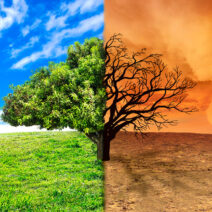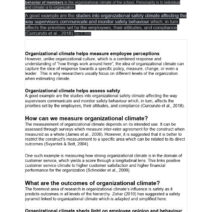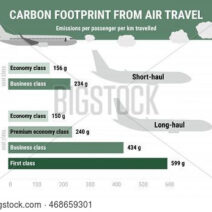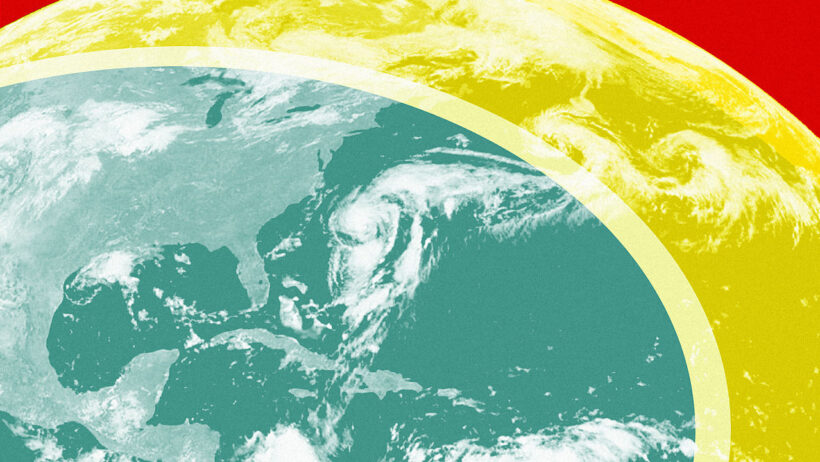The phenomenon of global warming often evokes a sense of urgency that is palpably felt across the globe. As we sift through the information, one question looms large: are we actively combating this crisis, or are we merely spectators, observing the planet as it reaches a boiling point? The confrontation with climate change is akin to witnessing an intricate tapestry unraveling before our eyes, each thread representing the delicate balance of our ecosystem. Yet, as we stand at this precipice, debate simmers: is our response sufficient, or do we lack the requisite vigor to amend our course?
To ignite a dialogue, it is essential to understand the crux of the issue. Global warming is not just an abstract concept; it manifests through tangible phenomena—rising sea levels, eroding coastlines, and increasingly erratic weather patterns. These manifestations serve as a sobering reminder of the encroaching consequences of our inaction. Each heatwave that sends temperatures soaring is a siren song, alerting us to the dire consequences of our excessive carbon emissions and insatiable appetite for fossil fuels. The Earth is communicating with us, and we must decipher its messages.
It is tempting to become desensitized. The digital age inundates us with images of environmental degradation—flooded cities, parched landscapes, and species teetering on the brink of extinction. This relentless barrage can lead to complacency. The phenomenon of “doomscrolling” has become a norm; we scroll through headlines that portray the devastation wrought by climate change, often feeling powerless to effect change. However, the notion that we are merely passive observers is misleading. Behind the scenes, numerous activists, scientists, and organizations fervently advocate for a more sustainable future. They lead initiatives, propose legislation, and foster community engagement with the intention of counteracting the perilous trajectory we currently find ourselves on.
Despite these efforts, the question remains: is it enough? Scientific studies affirm the potential of renewable energy, conservation practices, and legislative reforms. Transitioning to solar, wind, and hydroelectric power can drastically reduce our carbon footprint. Forest restoration and improved agricultural techniques can enhance our resiliency against climate shifts. However, the implementation of these solutions is not uniform across the globe. Inconsistencies in policy, economic disparity, and lack of access to technologies create a patchwork of progress, leading to questions about global accountability and equity.
Moreover, while many nations pledge to reduce emissions by a specific timeline, the reality often diverges from rhetoric. Agreements like the Paris Accord represent monumental steps, yet meeting the ambitious targets set forth remains a formidable challenge. Emission reduction often gets ensnared in political quagmires, with economic interests frequently overshadowing environmental imperatives. These roadblocks can give rise to disillusionment among those who toil in the trenches for environmental stewardship.
Consider the compelling metaphor of a ship adrift on an expansive ocean. Tilted and taking on water, it requires immediate intervention to correct its course. Yet the captain’s orders are drowned out by the clamorous voices onboard, each advocating for their own interests. The ship represents our collective response to climate change, and our failure to prioritize united action may lead to calamitous outcomes. The potential for catastrophe looms like a storm cloud on the horizon, but a concerted effort to recalibrate our trajectory can steer us towards a safer, more sustainable passage.
Collaboration across nations is vital in this narrative. Countries must pursue opportunities for dialogue, sharing innovative solutions and fostering partnerships that transcend borders. The urgency of climate change necessitates collective action. Localized efforts—such as community gardens, tree planting campaigns, and environmental education—create ripples that can influence broader legislative change. These grassroots movements act as the foundation upon which we can build sustainable communities, resilient in the face of environmental change.
Equally critical is the role of individuals in this equation. While the scale of climate change can feel impossibly vast, personal actions collectively have the power to incite significant change. Individuals can reduce consumption, advocate for sustainable practices, and partake in political processes. It is essential to recognize that while snapshot data regarding global temperatures can seem overwhelming, the persistence of small, conscious choices can lead to monumental impact.
Moreover, the youth—the torchbearers—are essential in furthering the dialogue. They possess the passion and the foresight necessary to challenge the status quo. Their voices, buoyed by a sense of urgency, have the potential to remodel societal perspectives. They can demand innovative solutions, question traditional narratives, and inspire collective action through their relentless advocacy for both environmental justice and sustainability.
Ultimately, the question “Are we doing anything or just watching the world heat up?” encapsulates a broader philosophical inquiry into the nature of collective responsibility. The answer is nuanced: we are engaged in both observation and action. However, understanding the gravity of our role is critical if we aspire to conjoin those two facets into a cohesive and effective response.
As we navigate this reality, we must embrace an ethos of accountability and proactivity. Each of us carries the weight of this shared stewardship, and the tapestry of our future depends on the decisions we make today. The intrinsic appeal of hope lies in our ability to remedy the mistakes of the past and forge a path toward a sustainable future. Let us not linger in the realms of mere spectatorship; let us become agents of change, for the fabric of our planet hangs in the balance.








